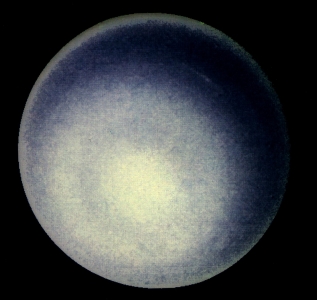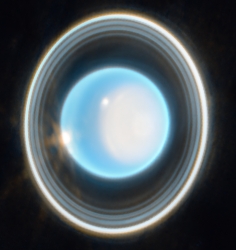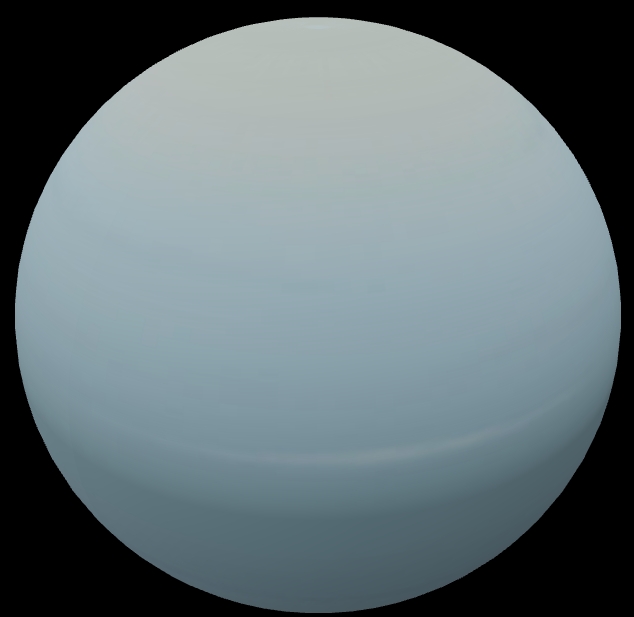 Uranus is the seventh planet from the Sun, and has the third-largest diameter in our solar system. It was the first planet found with the aid of a telescope, by astronomer William Herschel in 1781, although he originally thought it was either a comet or a star. The radioactive element uranium was named after Uranus when it was discovered in 1789, just eight years after the planet was discovered. Uranus is about four times wider than Earth. If Earth were an orange, Uranus would be the size of a basketball. Uranus orbits the sun at a distance of about 2.9 billion kilometers. It takes about 17 hours to rotate once (a Uranian day), and about 84 Earth years to complete an orbit of the Sun. Like Venus, Uranus rotates east to west. But Uranus is unique in that it rotates on its side.  Uranus is described as an 'ice giant'. Most of its mass is a hot, dense fluid of 'icy' materials – water, methane and ammonia – above a small rocky core. Its atmosphere made mostly of molecular hydrogen and atomic helium, with a small amount of methane. The methane makes Uranus blue.
Uranus is described as an 'ice giant'. Most of its mass is a hot, dense fluid of 'icy' materials – water, methane and ammonia – above a small rocky core. Its atmosphere made mostly of molecular hydrogen and atomic helium, with a small amount of methane. The methane makes Uranus blue.
Uranus has 27 known moons, and they are named after characters from the works of William Shakespeare and Alexander Pope. It has 13 known rings; the inner rings are narrow and dark and the outer rings are brightly coloured.  Nine distinct rings were identified in 1977, and two additional rings were discovered in 1986 in images taken by the Voyager 2 spacecraft. Then in 2003-2005, the Hubble Space Telescope found two more outer rings.
Nine distinct rings were identified in 1977, and two additional rings were discovered in 1986 in images taken by the Voyager 2 spacecraft. Then in 2003-2005, the Hubble Space Telescope found two more outer rings.The majority of Uranus's rings are opaque and only a few kilometres wide. The ring system contains very little dust; it consists mostly of large bodies 20 cm to 20 m in diameter. The ring system probably originated from the collision and fragmentation of several moons that once existed around the planet. After colliding, the moons probably broke up into many particles, which survived as narrow rings. NASA’s James Webb Space Telescope has taken a stunning image of Uranus and its rings (left). Voyager 2 is the only spacecraft to have flown by Uranus. No spacecraft has yet orbited this distant planet to study it at length and up close.  |